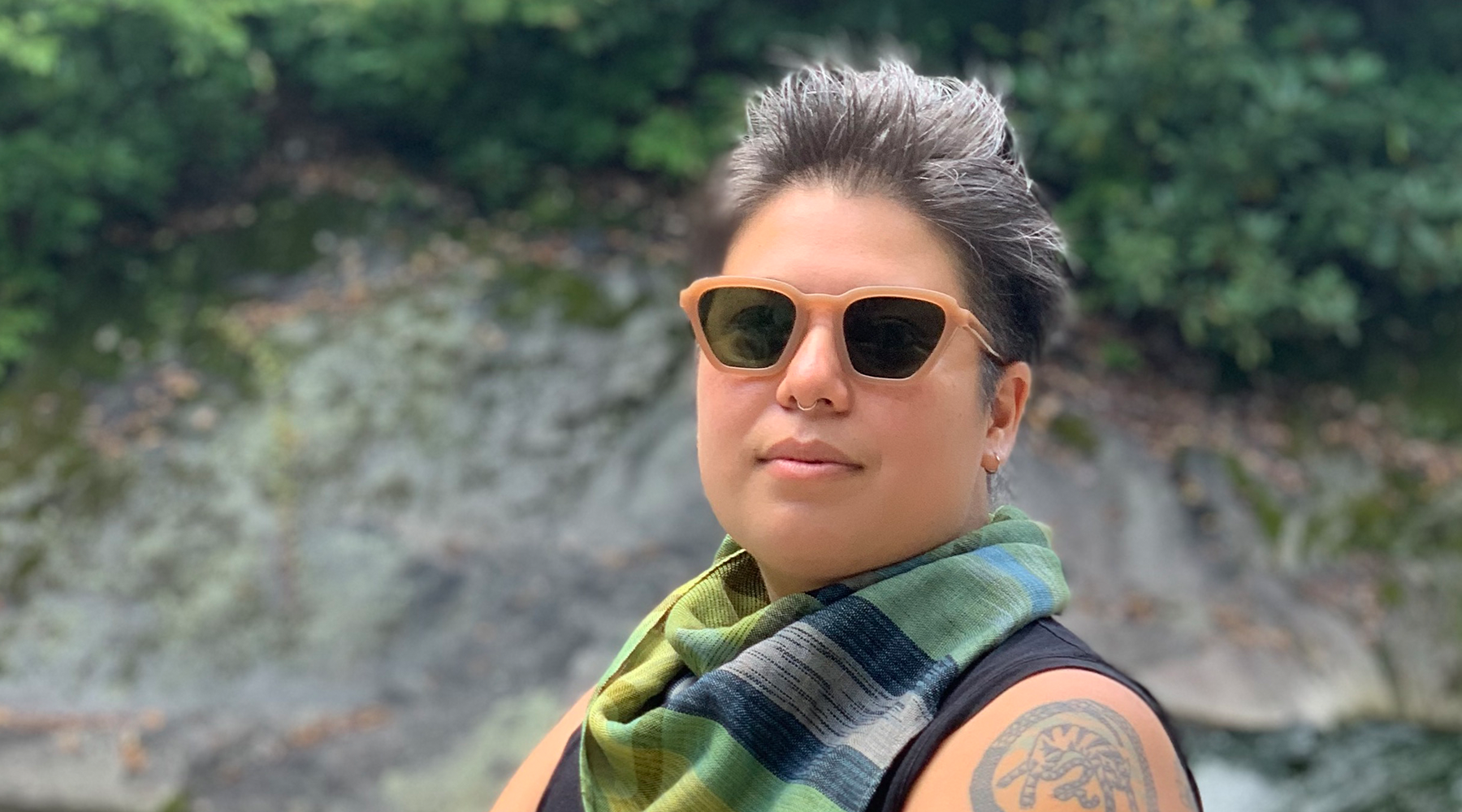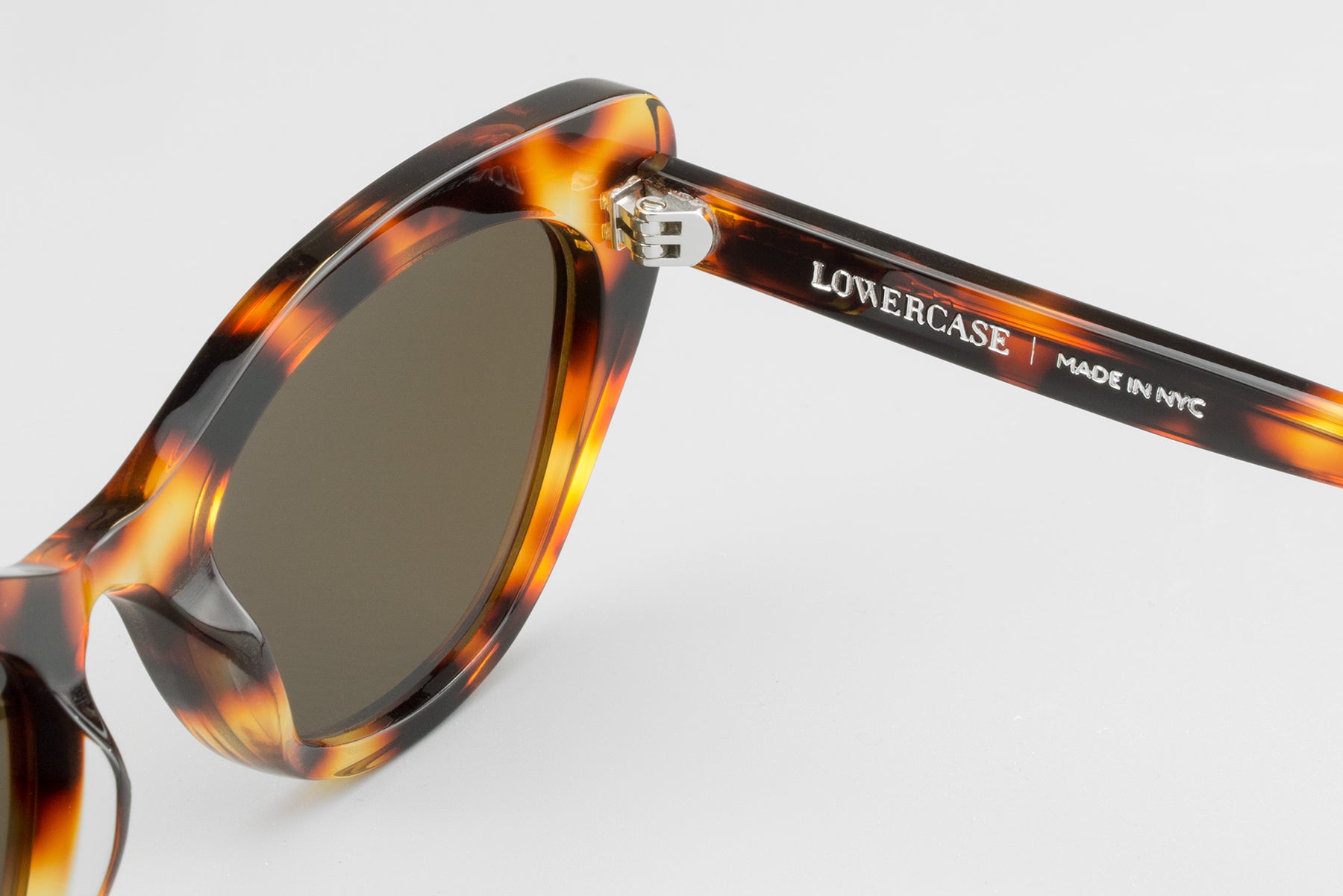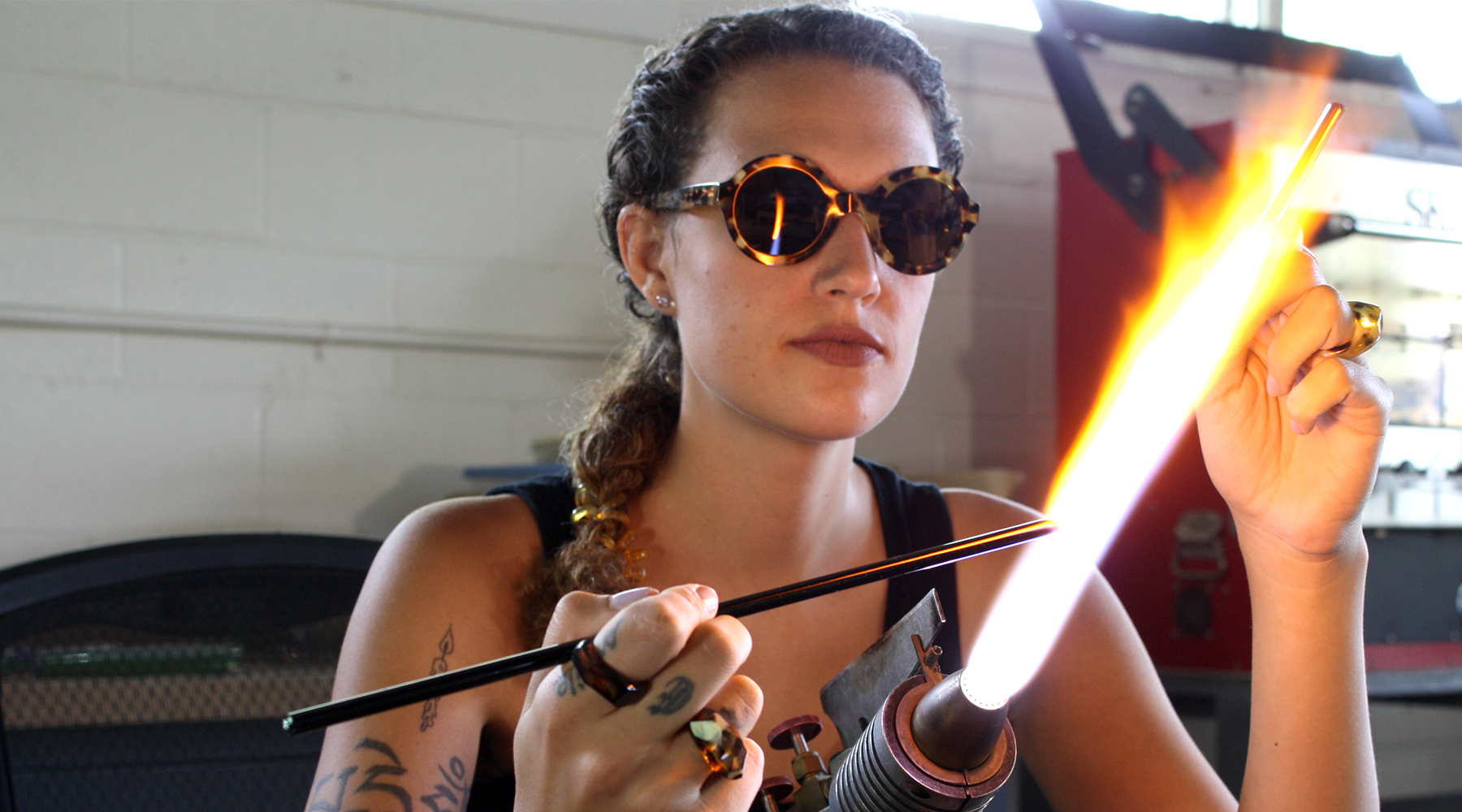
Crafted: Mitsu Shimabukuro
Lowercase talked design and labor, music, and technique with textile artist Mitsu Shimabukuro. Read our interview below.
What is your work like these days? Has the pandemic affected your practice?
Some incredible studio coordinators at Penland (where I am a Core Fellow) are teaching me how to make baskets, pull paper sheets, and spin paper into yarn. I’m planning a series of sculptures to combine these new processes with cyanotype photo exposures and weaving. When classes start again I want to explore using wood, metal, and glass. I’m currently working on some doubleweave tube sculptures that will incorporate indigo and cyanotype. Because indigo fades when exposed to daylight I see it as a kind of photography. I’m still testing materials but I’m excited to see how the processes interact!
Where do you find inspiration for your color and pattern choices?
I grew up in Hawaii, on the island of Maui. I think my sense of color comes from growing up in such a vibrant environment; layers of volcanic soil in Haleakala crater, dense foliage, spending lots of time in the ocean. I’m currently working in Penland, North Carolina, which reminds me a lot of home in certain ways. It’s a temperate rainforest here and there are incredible native orchids everywhere in our woods.
I’m naturally drawn to really strong, bright colors that look like they don’t belong together and I see it as a challenge to get them to balance. With my patterns I’m not as sure. I do think my past work in photography and sculpture comes into play, just thinking about contrasting texture and value. I try to challenge myself to complicate patterns beyond something you would find in a book, to surprise myself and other weavers about what is possible.
How would you describe the role of experimentation in your practice? I think process and experimentation are the main motivators of my practice. I’ve never done the same project twice, I am constantly coming in with a new material or structure as a variable to test and learn from. Sometimes experimentation for me is just play, I see it as the studio art equivalent of voice exercises or dance warm ups.

How do you develop your plaids/patterns?
I like drawing out the colors of my warp to get an idea of proportion and I’ll write out what my pattern structure will look like in terms of threading but I prefer to be surprised when I start weaving. There is weaving software that helps visualize a weaving draft but I usually only use it if I have to describe a larger project to someone else.

I imagine a lot of time goes into a handwoven textile. How long does loom work take, and are there any guiding ideologies that drive you?
Handweaving is a slow, intimate process. A weaver’s hand will touch every thread several times in the making of a piece. Dressing the loom takes anywhere from 15-50 hours, depending on the size of the warp and complexity of the pattern. I’ve started dyeing my warps in parts and that process -- tying ikat resist knots and dyeing -- takes a full week or more of work, depending on what natural dyes I’m using. Just cleaning and prepping the yarn to take natural dye is at least 12 hours. Weaving takes about 1-4 hours a yard, depending on the size of the weft yarn or how the warp is reacting. I’ve had warps where I have to repair a broken thread every inch.
I see labor as equalizing and honest, so challenges become a precursor to quality work. My pieces are a form of visual labor: I put in the time that I want my audience to spend with it. It is not intended to be comfortable.
Making is how I understand the world and where I feel the most agency. Because my process between materials stays the same, that's where I can notice ideology most. The subjects I focus on vary between identity and the relationships that interest me.

There’s a really strong sense of rhythm in a lot of your woven work. Is that something you can feel in the process? Do you ever listen to music while you work, and if so, what kinds?
My headspace varies a lot depending on what the process is needing at the moment. The dyeing and set up process takes a lot of attention and I usually make design alterations along the way. Sometimes the weaving or color sequence isn’t too complicated so I can listen to music and pretend like my weaving is more like dancing. But a lot of time I’m counting picks or focused on my treadling sequence. My top four in the studio lately have been Fiona Apple, Cardi B, Mitski, and Grouper. They’re not the artists I always listen to but I think they exemplify the range that I usually go between.

Last book you read?
The last book I read was Ocean Vuong’s On Earth We’re Briefly Gorgeous. It’s semi-autobiographical but reads like poetry and something about that combination felt really healing to read. As a queer person of color it means a lot to find your story reflected somewhere, as if their future becomes possible for you too.
What do you like to do when you aren’t making work? In high school I got involved with conservation groups that are working to restore Maui’s native forests and I fell in love learning about plants; I still love hiking and learning to identify native and medicinal plants. This spring I joined many people in starting a garden for the first time in many years! I have learned so much and have a greater appreciation for foraging now too.
Are there any artists, textile or otherwise, or people in general who inspire your practice? Anyone you’d most like to collaborate or work with?
There are so many textile artists working today to be inspired by! Diedrick Brackens, Jade Yumang, Mimi Jung, and Jovencio de la Paz all come to mind right away. I think they’re all incredible examples that weaving has no one “look” and that it can really encompass any material or form. In terms of collaboration I’d be honored to work with the clothing company Chromat on a series of woven accessories. I also love the work of florist and photographer Manu Torres and have been dreaming about working with them on textiles or baskets that have flowers woven in.
Where can you see yourself going after Penland? The hardest question! I only know that I have to move closer to the ocean, possibly the west coast. I do hope that I’ll feel ready to start my own business after my time at Penland but I’m open to anything that allows me focus on my work.

Any specific piece- recent or otherwise- that embodies your design, process, ideological ideals? My last two warps have been production bandanas but with extensive dyeing techniques. I wrapped warp chains with ikat resists and naturally dyed some with indigo and weld. With other parts of the warp I used yarns that were already commercially dyed and put them in a discharge dye bath, removing color. This comparison of additive and reductive color is really interesting to me, especially because I’m still learning about natural dyeing and wanting to compare it to the yarns I otherwise use. For a 24” wide warp I had 29 individual warp chains (when you’d normally have 1-2) which was a nightmare to get on but I was really happy with the effect.






